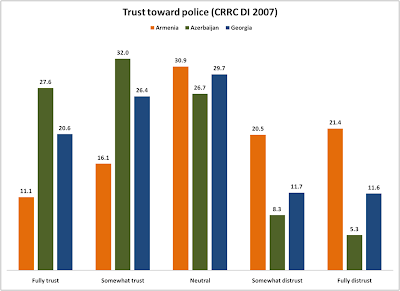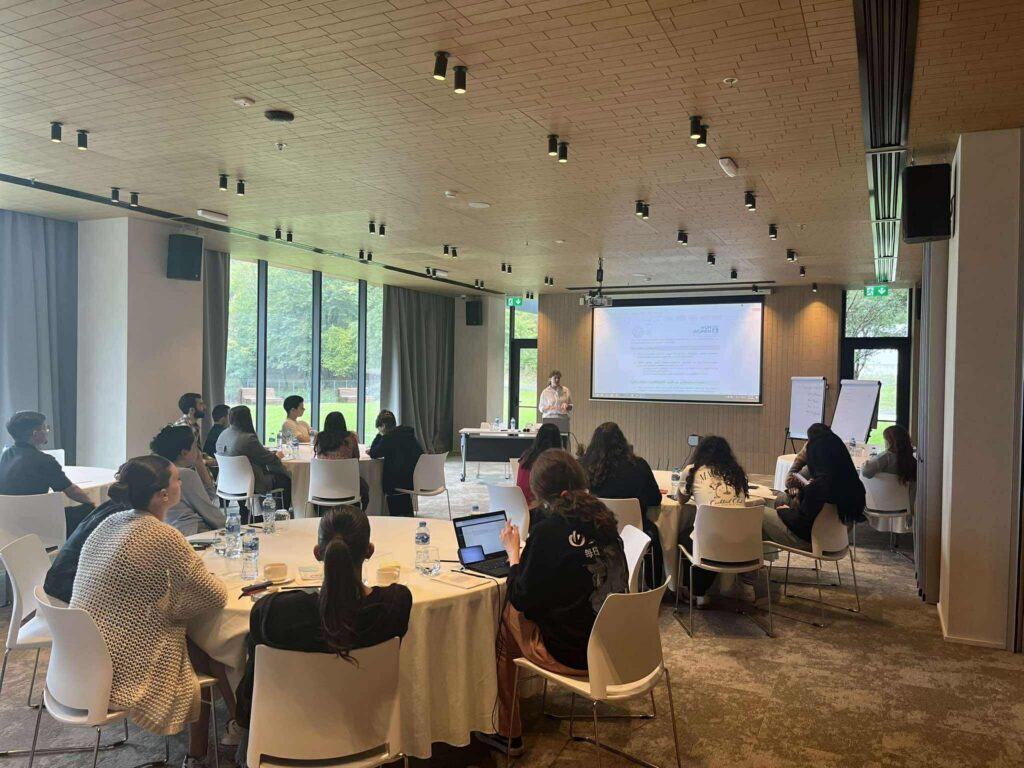Who secures personal safety in the South Caucasus? CRRC DI has an answer to this question and a surprising answer at that. We asked around 8000 households in Armenia, Azerbaijan and Georgia to evaluate how well criminal leaders, friends, relatives, media, neighbors, NGOs, Ombudsmen, police, private security agencies and Prosecutor’s office secure personal safety. For now let’s just focus on the three components: the Ombudsmen, police and the criminal leaders.
In Armenia, ironically, criminal leaders have top positions in the chart of groups/institutions that effectively secure personal safety of the population with 22% of the respondents evaluating them positively. Criminal leaders are not far from the police; moreover, while a similar percentage of respondents (22.1% vs. 22.9%) finds Ombudsmen and criminal leaders effective in securing personal safety, more respondents actually find Ombudsmen ineffective, by comparison with criminal leaders (52.3% vs. 47.1%).
How does the situation look in the neighboring countries? In Georgia, the percent of those who positively evaluate how criminal leaders secure personal safety (arguably relatively high) is around 13%; it would be interesting to compare these numbers with the data prior to Saakashvili reforms. (We actually have some data from 2004 in a different file, so let us know if you are interested in the comparison!) In Azerbaijan, only 7.2% assess criminal leaders effective in securing personal safety against 87.5% of those who find them ineffective.
Among the three South Caucasus countries Armenia shows the lowest level of trust in the police, while the highest level of trust being observed in Azerbaijan – almost 60%. Trust in the police in Georgia is not very high considering the fact that it is seen as one of the main successes of the post-revolution government. From our data we can see that the trust in police had decreased after the murder case of Sandro Girgvliani in 2006, but it is going up again.









